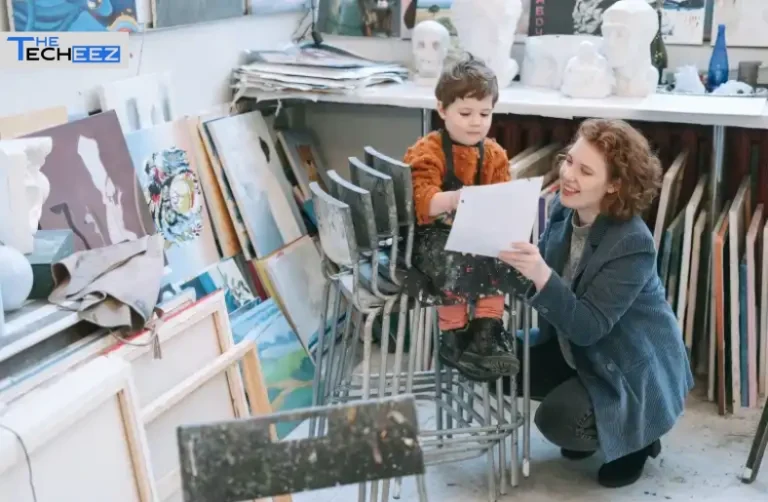Introduction to Teaching Tools.art
In today’s digital-first world, educators are continuously searching for innovative platforms that make teaching engaging, interactive, and accessible. Teaching Tools.art is one of the emerging online resources designed to support teachers, students, and content creators by offering versatile, creative tools for digital learning. With a focus on simplicity and adaptability, it empowers educators to blend creativity with pedagogy in new and dynamic ways.
This article explores what Teaching Tools.art is, why it matters, how it can be used effectively in different educational settings, and what its future potential might be for digital learning.
What is Teaching Tools.art?
At its core, Teaching Tools.art is a web-based platform that provides a collection of digital tools designed for modern classrooms. Unlike traditional teaching aids that often rely on static content, this platform emphasizes interactive and creative elements. It allows educators to design lessons, visual aids, and activities that not only transmit information but also foster critical thinking, collaboration, and creativity.
The “.art” extension signals that the platform is not just about technical teaching but also about integrating artistic expression into learning, giving teachers the freedom to design visually appealing and engaging resources.
Why Teaching Tools.art is Relevant Today
Education has rapidly shifted toward hybrid and online models. Teachers are no longer limited to chalkboards and textbooks—they must incorporate digital tools that match students’ tech-savvy lifestyles. Teaching Tools.art bridges this gap by offering:
Accessibility – Online access makes it possible for both teachers and students to engage from anywhere.
Creativity – Resources can be customized and infused with artistic elements.
Interactivity – Lessons can include dynamic features like visuals, interactive slides, and engaging activities.
Adaptability – Works across subjects, from STEM to humanities, and even art-focused learning.
The rise of digital learning means platforms like Teaching Tools.art are not just supplemental—they are becoming central to effective teaching strategies.
Core Features of Teaching Tools.art
To understand its educational potential, let’s break down the key features of Teaching Tools.art:
1. Lesson Design Tools
Educators can design lesson plans enriched with visuals, infographics, and interactive elements, making abstract concepts easier to understand.
2. Visual Learning Aids
With built-in templates and design options, teachers can create slides, posters, and handouts that are visually appealing. This is especially useful for visual learners who retain information better through graphics.
3. Interactive Class Activities
The platform allows teachers to create quizzes, polls, and collaborative exercises. These encourage student participation and make learning feel more like a conversation than a lecture.
4. Cross-Disciplinary Use
Whether you are teaching math, science, literature, or art, Teaching Tools.art adapts to any subject. A history teacher might design an interactive timeline, while a science teacher could create a digital lab experiment guide.
5. Cloud-Based Collaboration
Students and teachers can collaborate on projects in real-time, making it ideal for group assignments and hybrid classrooms.
How Educators Can Use Teaching Tools.art
The flexibility of Teaching Tools.art means educators can tailor it to their needs. Some practical applications include:
Creating digital worksheets that can be filled out online or downloaded for offline learning.
Designing presentations with a balance of text and visuals to keep learners engaged.
Assigning interactive homework where students can complete tasks in a digital environment.
Encouraging creative projects such as digital storytelling, poster design, or visual essays.
Conducting formative assessments through quick quizzes and polls that track progress.
By blending functionality with creativity, the platform ensures that teachers can move beyond rote memorization and encourage deeper learning.
Benefits of Using Teaching Tools.art
The advantages of using this platform go beyond convenience. Some of the most impactful benefits include:
Boosts Student Engagement – Visually rich and interactive content keeps students motivated.
Saves Time for Educators – Pre-made templates and easy customization streamline lesson planning.
Encourages Creativity – Both teachers and students can think outside the box with digital design options.
Supports Inclusivity – Visual and interactive features help cater to different learning styles.
Prepares Students for Digital Futures – Familiarizing students with digital collaboration equips them with essential 21st-century skills.
Potential Challenges and Considerations
While Teaching Tools.art is promising, educators should consider a few challenges:
Learning Curve – Teachers new to digital platforms may need time to adapt.
Access Inequality – Students without reliable internet or devices may face barriers.
Over-Reliance on Technology – While digital tools are powerful, balancing them with traditional teaching methods remains important.
By addressing these challenges with thoughtful planning, educators can maximize the benefits while minimizing drawbacks.
Future of Teaching Tools.art in Education
The future of Teaching Tools.art looks bright, especially as schools increasingly invest in EdTech solutions. Upcoming possibilities might include:
AI Integration – Automated feedback, personalized learning paths, and data analytics for teachers.
AR/VR Features – Creating immersive lessons for history, science, or geography.
Global Collaboration – Connecting classrooms worldwide for joint projects.
As education evolves, platforms like Teaching Tools.art will play a crucial role in shaping how knowledge is delivered and absorbed.
Conclusion: Why Teaching Tools.art Matters
In a world where digital literacy is as important as traditional academics, Teaching Tools.art stands out as a platform that combines creativity with practical teaching needs. It empowers educators to design lessons that are engaging, interactive, and visually compelling, while giving students opportunities to learn in ways that resonate with their digital lifestyles.
Whether used in a physical classroom, an online course, or a hybrid setup, this platform represents the next step in modern teaching—where art meets technology to transform education.


